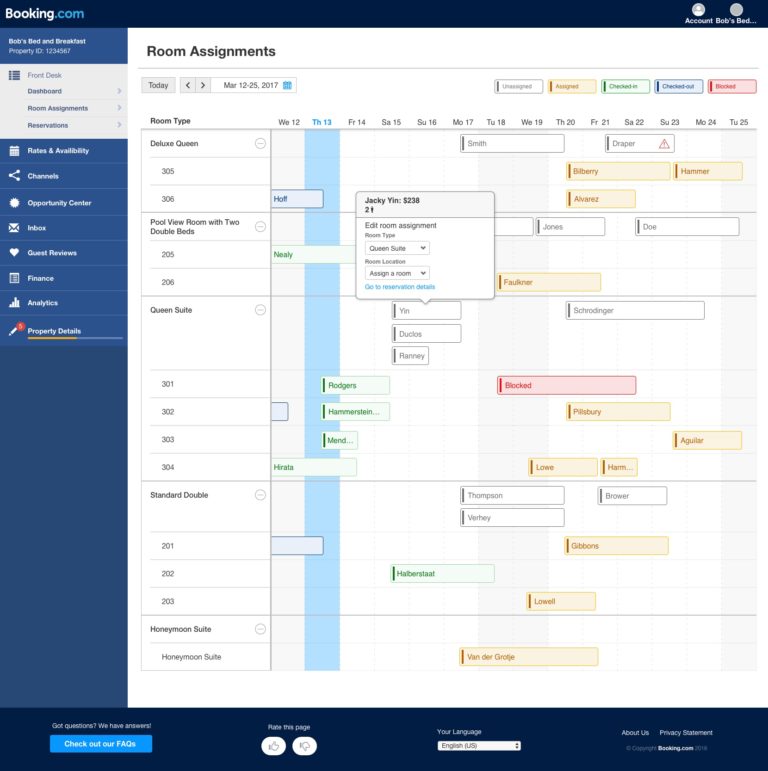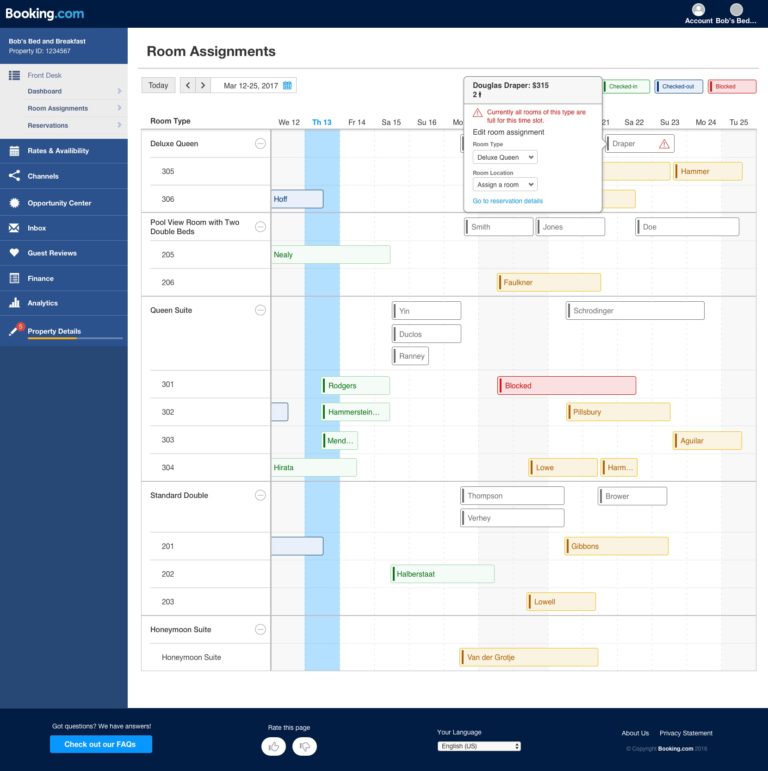
Project Overview
- Company: Booking.com
- Industry: Travel
- Time : Released June 2017
The Company
Based in Amsterdam, Booking.com is one of the world’s largest e-commerce companies and specialized in global online hotel reservations. Booking has hundreds of offices around the world supporting millions of partners ranging in size from 1 to over 200 rooms, has over 15,000 employees, and sees millions of reservations made daily.
The Product
Booking.com’s partner facing interface enables management of property details and listings as seen on the guest facing interface, as wall as manage reservations, rates and billing details. The PMS features brings in necessary services involved in day to day management of the responsibilities of a hotelier.
The Users
Hotels that use Booking.com are considered partners in the mutual benefits of getting reservations, hotels get rooms filled and those reservations in turn become revenue for Booking by making a percentage from each completed stay booked through its platform. A hotel that is successful with Booking will ideally put more of its availability with booking versus other channels, increasing the number of reservations available.
A day in the hotel owner/managers life can mean juggling sometimes dozens of responsibilities and corresponding tools to manage their staff, housekeeping, room assignment, reservation channels, billing, day to day property needs, marketing and more.The PMS is aimed to reduce the friction of using so many different tools by integrating a PMS into Booking’s interface.
The Room Assignment Grid
My focus was the Room Assignment Grid. A visual tool for assigning and shuffling reservations to rooms, but also enables forecasting occupancy outlooks, can inform rate setting decisions, and be used for housekeeping. This includes reservations made in different channels such as Booking.com, phone, walk-in’s, and other OTA’s.
The problem
Currently, there aren’t many affordable or easy to use options for hotels smaller than 50 rooms. Many resort to pen and paper, or create their own spreadsheets that require frequent manual updating.
Solution
A integrated room assignment grid within Booking.com’s platform for a better room management option.
Benefits:
- Hoteliers are empowered to more efficiently plan room stays to fit more guests into the same period of time, maximizing profits.
- Visually provides a clear and high level look at room dates and detail that can be easily managed
- Highlights nuances such as inefficient gap periods between reservations. Easier to ascertain and analyze than a reservation list
My work included:
- Collaborating on goals, objectives, and requirements document
- Conducting stakeholder interviews
- Conducting competitive research
- Collaborate on persona development
- High fidelity mock-ups and prototypes
- Conducting user research and usability testing
- Aligning with team including engineers, product owners, and designers



Results
Due to company changes, I wasn’t able to see the release through but followed up on its progress. While interface elements and functionality was scaled back, this feature has been seen great success in the UK and Europe with very high adoption rates, and now has 100’s of users.
